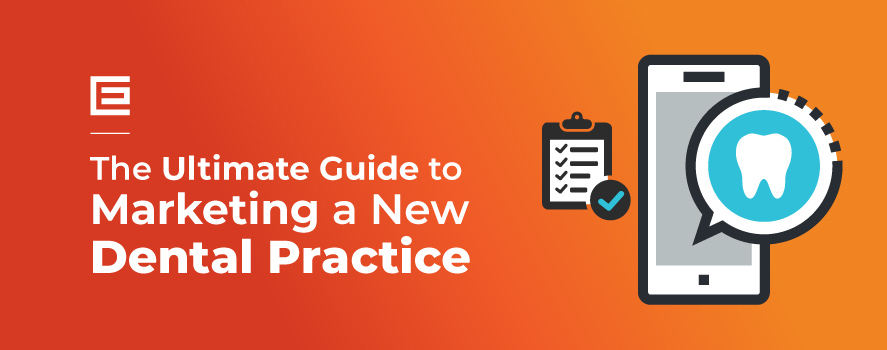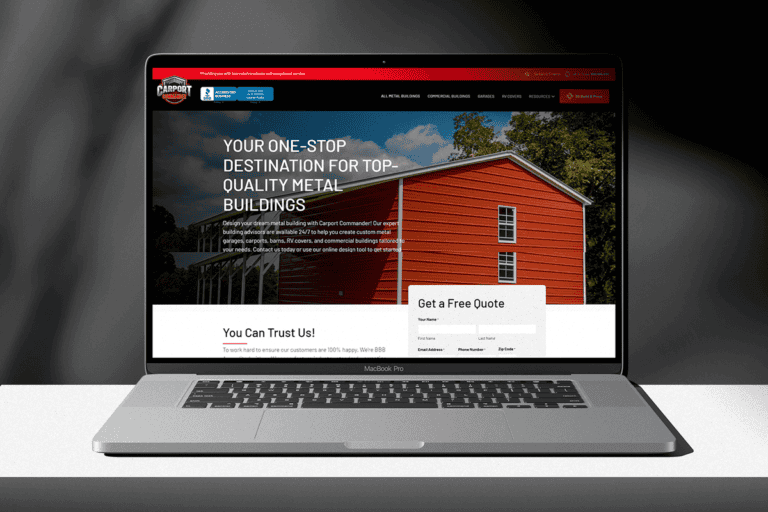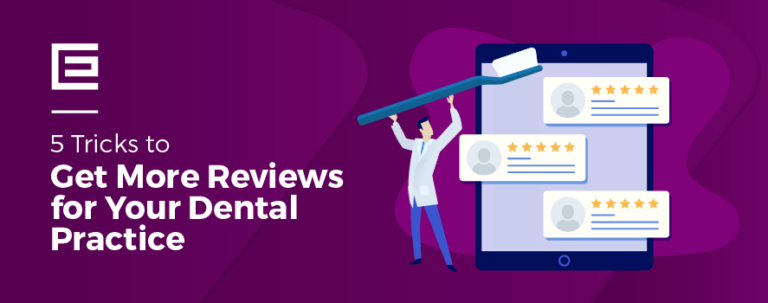Opening a new dental practice is a huge accomplishment and a lot of work. From finding your perfect office space to hiring your new team to marketing your dental practice. That last one – marketing – is especially important if you’re not bringing patients with you from a previous practice. Without a solid dental marketing plan, you’ll struggle to bring in patients and grow.
So how should you go about marketing a dental practice? As dental marketing experts, we have a lot of experience helping both established and practices flourish. We’re letting you in on some secrets with these 10 tips for marketing a new dental practice. (These are also great ideas for more established practices!)

Dental Marketing Ideas for New Practices
1. Focus on Your Website
A website is a valuable marketing tool. It tells prospective patients about your practice and lets them know what to expect when they visit you. An outdated design, slow loading time, or a bad mobile experience are enough to make people think twice about booking an appointment with you.
A great dental practice website should have a modern design, be mobile-friendly, and make it easy for patients to find the information they need.
Here are a few features you should be sure to include:
- Online appointment booking – make it easy for patients to schedule an appointment with you.
- Online bill pay – skip paper invoices and checks by making it easy for patients to pay bills online.
- Profiles for each dentist – prospective patients want to know who will be treating them. An “About” page with information about each dentist goes a long way in establishing trust.
- Content that promotes dental hygiene – a dental blog on your site gives patients valuable information and is another trust signal for patients.
When you’re choosing a web design agency, look for one that has experience creating dental websites and is familiar with coding websites with search engine optimization in mind.
2. Focus on Local SEO
It’s important that your website is built with SEO in mind because local SEO is a huge factor in marketing your dental practice! SEO ensures that your website shows up in search engine results for the most relevant keywords. Local SEO ensures that you show up in search results for people searching for your keywords in your area.
When your site is optimized for local traffic, you have a better chance of showing up in search engine results for people in your area searching for your services. This includes the coveted Google “Three-Pack”:

Start optimizing your site by using your location throughout your website. Your city name is enough, although if your practice is located in a city that shares its name with other locations, like Springfield, you’ll want to include your state abbreviation.
Adding your location to your list of keywords is a good start, but one of the biggest factors in local SEO is your Google My Business listing, which we’ll discuss in depth further down.
Another big factor in local SEO are citations. This includes your Yelp listing and any listings in dental directories, which we’ll also discuss in just a bit.
3. Claim and Optimize Your Google My Business Listing
This is an often-overlooked part of digital marketing, but it’s arguably one of the most important pieces of the local SEO puzzle. Claiming your listing is completely free and tells Google more about your practice, making it easier for them to display that information to searchers.
Not sure what a Google My Business (GMB) listing is? It’s this box that shows up when you search on Google:

In addition to showing up on the search results page, an optimized GMB listing increases your chances of appearing in the Google Local Pack (the top three businesses listed with the map in local search results), the Local Finder, Google Maps, and organic rankings in general.
You should also know that we have noticed more and more searchers using the GMB listing to call dentists or book appointments. Prospective patients can’t call you if your listing isn’t there! Another thing patients can’t do if you don’t have a GMB listing? Leave reviews. We’re going to discuss reviews a little further down, just keep in mind that reviews are crucial to your practice and so is your GMB listing.
Get started by claiming your Google My Business listing and then checking out our complete guide to optimizing your dental practice’s GMB listing.
4. List Yourself in Dental Directories
Adding yourself to dental directories strengthens your SEO efforts and gives prospective patients more opportunities to find you. You don’t have to list yourself in every directory out there, but here are a few to start off with:
5. Ask for Reviews
You know online reviews are important, but did you know that a 2018 study found that 91% of people in the 18-34 age bracket trust online reviews almost as much as a review from someone they know? That’s right, most of us trust a stranger’s online review as much as we trust a recommendation from a friend!
Another interesting statistic from the same study: 57% of consumers will only use a business if it has 4 or more stars. So if a prospective patient finds you on Google but they see this:

They’re probably not going to give you a second thought. Reviews are possibly the biggest trust signal online and without them, there is no trust there. Google, Yelp, Healthgrade, ZocDoc, and 1-800-Dentist are all places that prospective patients might look for reviews. Google and Yelp are the most important review sites, by far, but don’t ignore healthcare-specific review sites.
The key getting more reviews is making it easy for customers to leave them. You can do this with automated messages sent by your dental practice management software or a standalone service like Birdeye. If you struggle to get reviews, check out our tips for getting more reviews for your dental practice!
6. Establish a Social Media Presence
Social media is a must, even in dental marketing, but there are a few misconceptions about social media marketing. It shouldn’t be all promotional. The idea is to create and share authentic content that people want to see every day. No one wants to follow a purely promotional account so be sure to incorporate education and a little fun into your social media posts. A few ideas for posts…
- Create videos explaining dental procedures
- Post fun photos of your staff
- Show before and after photos (with patients’ permission)
- Share dental memes (if it fits in with your brand voice)
Another misconception about social media marketing is the idea that you have to be on every platform: Facebook, Instagram, Twitter, LinkedIn, Snapchat, the list goes on. It gets overwhelming very quickly!
You don’t have to be on every platform and, in fact, you shouldn’t try to. Having one well-managed, active account is better than having 5 poorly managed, semi-active accounts. Choose one or two social media sites to establish your presence on. We recommend Facebook or Instagram because they’re the most popular platforms.
Here is an example of a dental practice that does a great job with Facebook:

7. Email Marketing
Email marketing isn’t dead! Most patients prefer communication via email and a 2018 study found that email is the most effective marketing channel.
For new dental practices, email marketing is less about sending newsletters, although that’s still a valid tactic, and more about sending personalized emails to patients. Appointment reminders, thank you emails, and reminders to use benefits before they expire are all great ways to keep your patients engaged and coming back. And that’s exactly what you want to do when building your patient base!
And you don’t have to have someone manually send these emails. Personalized emails (and even texts) can be automated with most dental practice management programs. If your practice management software doesn’t have this, a standalone program like Birdeye is a good option.
8. A Direct Mail Campaign
Just like its digital counterpart, snail mail isn’t dead. In fact, you might be surprised to learn that direct mail has a higher response rate than digital marketing communication methods!

For a new dental practice, mailing a postcard announcing your opening and any special offers to homes in a certain radius from your office is a proven way to increase awareness and leads. And while most dentists now send email appointment reminders, like we mentioned above, postcard reminders are still a great way to incorporate direct mail into your marketing strategy.
9. Pay Per Click Advertising
Pay-per-click advertising is a great way to raise awareness of your new dental practice and attract patients that are actively looking for your services. With PPC experts and a solid strategy, you can drive more website traffic, higher quality leads, and ultimately, more patients.10. Local Outreach
Outreach is a “soft” dental marketing activity that goes a long way in establishing trust and getting your name out in your community. Taking part in local health fairs, taking part in community service projects, and holding drives for items like dental hygiene products, canned food, or winter coats are all great ways to show your community that you’re here and you care.
Want More Assistance With Your Dental Marketing?
Tags: Dental Marketing • Inbound Marketing






